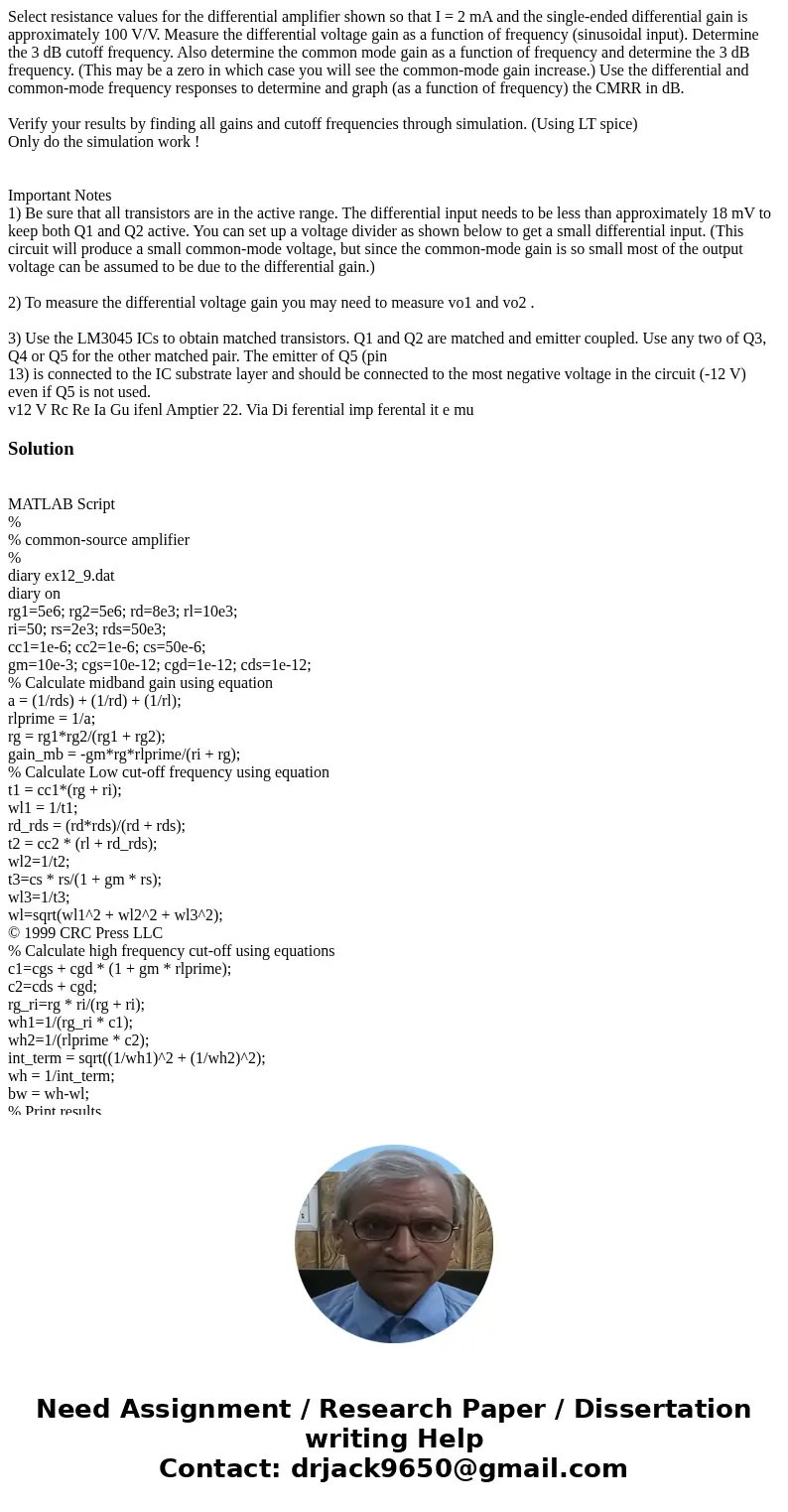Select resistance values for the differential amplifier shown so that I = 2 mA and the single-ended differential gain is approximately 100 V/V. Measure the differential voltage gain as a function of frequency (sinusoidal input). Determine the 3 dB cutoff frequency. Also determine the common mode gain as a function of frequency and determine the 3 dB frequency. (This may be a zero in which case you will see the common-mode gain increase.) Use the differential and common-mode frequency responses to determine and graph (as a function of frequency) the CMRR in dB.
Verify your results by finding all gains and cutoff frequencies through simulation. (Using LT spice)
Only do the simulation work !
Important Notes
1) Be sure that all transistors are in the active range. The differential input needs to be less than approximately 18 mV to keep both Q1 and Q2 active. You can set up a voltage divider as shown below to get a small differential input. (This circuit will produce a small common-mode voltage, but since the common-mode gain is so small most of the output voltage can be assumed to be due to the differential gain.)
2) To measure the differential voltage gain you may need to measure vo1 and vo2 .
3) Use the LM3045 ICs to obtain matched transistors. Q1 and Q2 are matched and emitter coupled. Use any two of Q3, Q4 or Q5 for the other matched pair. The emitter of Q5 (pin
13) is connected to the IC substrate layer and should be connected to the most negative voltage in the circuit (-12 V) even if Q5 is not used.
v12 V Rc Re Ia Gu ifenl Amptier 22. Via Di ferential imp ferental it e mu
MATLAB Script
%
% common-source amplifier
%
diary ex12_9.dat
diary on
rg1=5e6; rg2=5e6; rd=8e3; rl=10e3;
ri=50; rs=2e3; rds=50e3;
cc1=1e-6; cc2=1e-6; cs=50e-6;
gm=10e-3; cgs=10e-12; cgd=1e-12; cds=1e-12;
% Calculate midband gain using equation
a = (1/rds) + (1/rd) + (1/rl);
rlprime = 1/a;
rg = rg1*rg2/(rg1 + rg2);
gain_mb = -gm*rg*rlprime/(ri + rg);
% Calculate Low cut-off frequency using equation
t1 = cc1*(rg + ri);
wl1 = 1/t1;
rd_rds = (rd*rds)/(rd + rds);
t2 = cc2 * (rl + rd_rds);
wl2=1/t2;
t3=cs * rs/(1 + gm * rs);
wl3=1/t3;
wl=sqrt(wl1^2 + wl2^2 + wl3^2);
© 1999 CRC Press LLC
% Calculate high frequency cut-off using equations
c1=cgs + cgd * (1 + gm * rlprime);
c2=cds + cgd;
rg_ri=rg * ri/(rg + ri);
wh1=1/(rg_ri * c1);
wh2=1/(rlprime * c2);
int_term = sqrt((1/wh1)^2 + (1/wh2)^2);
wh = 1/int_term;
bw = wh-wl;
% Print results
fprintf(\'Midband Gain is %8.3f\ \', gain_mb)
fprintf(\'Low frequency cut-off is %8.3e\ \', wl)
fprintf(\'High frequency cut-off is %8.3e\ \', wh)
fprintf(\'Bandwidth is %8.3e Hz\ \', bw)


 Homework Sourse
Homework Sourse